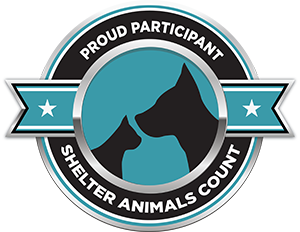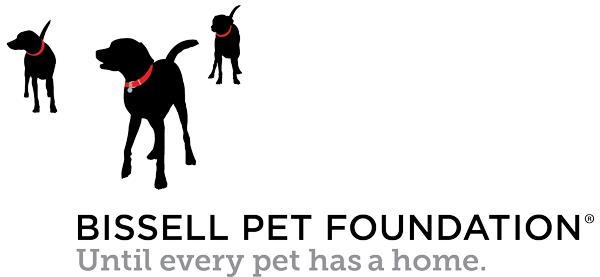Intake Policy
How SSR Finds Dogs
Most SSR dogs come from shelters. Some are born in rescue, some are found as strays, some are rescue transfers, and others are owner surrenders.
SSR has developed relationships across the United States with both shelters and individuals who pull dogs from shelters. Many of these shelters are among the highest-kill shelters in the United States.
How SSR Decides Which Dogs To Bring In
Potential SSR dogs are identified by SSR’s Intake Coordinators. SSR helps dogs in dire need first. SSR considers tagging dogs that are:
- In shelters in immediate danger of being euthanized
- In shelters needing immediate medical help that the shelter cannot provide
- Found running or roaming
- Deprived of food, water, shelter, or veterinary care
- Surrendered by their owners
Intake Process
Intake steps for out-of-state dogs
- Temperament test the dog.
Behavior assessment is done by the shelter and by the veterinarian the shelter uses. Dogs that do not pass temperament testing are not released to rescue.
- Tag the dog.
SSR chooses a dog and assigns a SSR tag # which is a unique identifier within SSR. The tag# becomes part of the dog’s name, e.g., a dog named “Atlas” with a SSR tag # of 0026 would have the SSR name “Atlas 0026.”
- Hold the dog.
The state in which the dog resides holds the dog for a state- or vet-specified amount of time, e.g., in Texas dogs are held 10-21 days before releasing to rescue. The dog is ready for transport to a rescue when the veterinarian issues a health certificate for the dog.
- Transport the dog.
The state in which the dog resides holds the dog for a quarantine period to ensure that contagious dogs are not transported across state lines. During the quarantine period, the dogs are boarded in that state at either an SSR-approved veterinarian or a temporary foster home. After the quarantine period, the dog is examined by a veterinarian who issues a Health Certificate for travel.
- Deliver dog to the foster parent.
The foster parent either meets the transport with an SSR representative or the SSR representative delivers the dog to the foster parent at a specified location.
- Vet-check the dog.
The dog is vet-checked by an SSR-approved veterinarian soon after arriving at the foster home.
Intake steps when a dog is found as a stray (in state):
- Report the dog to the Animal Control Officer (ACO).
- Unless the owner is found and wants the dog back, the dog typically remains with SSR in a foster home until ACO formally releases the dog to SSR.
- The dog is vet-checked by an SSR-approved veterinarian soon after arriving at the foster home.
Intake steps during a rescue transfer:
- The rescue contacts SSR.
- SSR contacts the rescue and sets an appointment to meet with the rescue and the dog.
- SSR performs a temperament test of the dog, if deemed necessary (the rescue may have already done a temperament test).
- The rescue completes (and signs) the Rescue Transfer Agreement.
- The dog is transferred by an SSR representative to an SSR foster home.
- The dog is vet-checked by an SSR-approved veterinarian soon after arriving at the foster home, unless the dog’s medical records show that it is current on all vaccines.
Intake steps during an owner surrender:
- The owner fills out the online Owner Surrender Form on the website to start the surrendering process.
- SSR contacts the owner and sets an appointment to meet the owner and the dog.
- SSR performs a temperament test of the dog.
- The owner completes (and signs) the Owner Surrender Agreement.
- The dog is transferred by an SSR representative to an SSR foster home.
- The dog is vet-checked by an SSR-approved veterinarian soon after arriving at the foster home, unless the dog’s medical records show that it is current on all vaccines.
Information Collected During Intake
The Intake Coordinator responsible for the intake of a dog is responsible for obtaining the required (by law) documentation for transfer of ownership. Depending on the dog’s path to SSR, the following documents are collected with the dog:
- Ownership transfer document
- Rescue Transfer Form
- Shelter Transfer paperwork (which is typically provided by the shelter)
- Owner Surrender Form
- Health Certificate (if coming from out-of-state)
- Veterinary records
- Proof of Rabies vaccination and Rabies tag # (if issued one)
How SSR Handles the Information Collected During Intake
SSR enters information about each dog into a database connected to the SSR website. Some of this information is then displayed on the website as part of the dog’s description.
This information includes:
- Dog name
- The dog’s name is written as Name Tag#, e.g. Zeke 0026.
- To keep the dog’s paperwork trail intact (especially when the dog is brought in from out-of-state), the dog’s original name remains with the dog until adoption unless the dog has no name and then a name will be given by the person responsible for intake.
- SSR tag #
- Intake date
- Intake reason
- Shelter/owner name, address and email/phone contact information
- Gender
- Age
- Approximate weight
- Neuter/spay status
- Description of overall health, veterinary recommendations, treatment plans
Why SSR Sometimes Temporarily Closes Intake
SSR receives many requests each month to take in dogs and we sincerely regret the occasions where we are not able to take a dog. SSR does not have a facility that houses dogs, and unfortunately we cannot legally accommodate a dog if we do not have an available foster home or have the funds to care for it prior to adoption.
When we have no available foster homes or lack the funds to care for new dogs, SSR closes the intake process until foster homes and/or the necessary funds are available.
If you have any questions on SSR’s Intake Policy, please email info@shenandoahrescue.org



